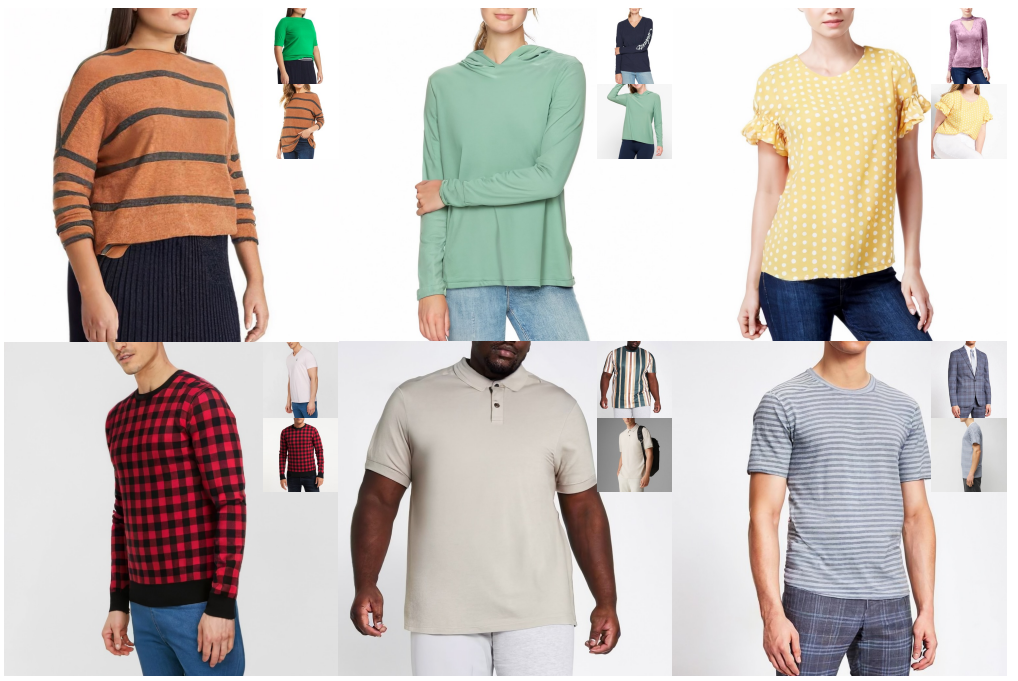and the distribution of digital products.
TryOnDiffusion: A Tale of Two UNets
:::info Authors:
(1) Luyang Zhu, University of Washington and Google Research, and work done while the author was an intern at Google;
(2) Dawei Yang, Google Research;
(3) Tyler Zhu, Google Research;
(4) Fitsum Reda, Google Research;
(5) William Chan, Google Research;
(6) Chitwan Saharia, Google Research;
(7) Mohammad Norouzi, Google Research;
(8) Ira Kemelmacher-Shlizerman, University of Washington and Google Research.
:::
Table of Links3.1. Cascaded Diffusion Models for Try-On
5. Summary and Future Work and References
\ Appendix
\

Given two images depicting a person and a garment worn by another person, our goal is to generate a visualization of how the garment might look on the input person. A key challenge is to synthesize a photorealistic detailpreserving visualization of the garment, while warping the garment to accommodate a significant body pose and shape change across the subjects. Previous methods either focus on garment detail preservation without effective pose and shape variation, or allow try-on with the desired shape and pose but lack garment details. In this paper, we propose a diffusion-based architecture that unifies two UNets (referred to as Parallel-UNet), which allows us to preserve garment details and warp the garment for significant pose and body change in a single network. The key ideas behind Parallel-UNet include: 1) garment is warped implicitly via a cross attention mechanism, 2) garment warp and person blend happen as part of a unified process as opposed to a sequence of two separate tasks. Experimental results indicate that TryOnDiffusion achieves state-of-the-art performance both qualitatively and quantitatively.
1. IntroductionVirtual apparel try-on aims to visualize how a garment might look on a person based on an image of the person and an image of the garment. Virtual try-on has the potential to enhance the online shopping experience, but most try-on methods only perform well when body pose and shape variation is small. A key open problem is the non-rigid warping of a garment to fit a target body shape, while not introducing distortions in garment patterns and texture [6, 14, 43].
\ When pose or body shape vary significantly, garments need to warp in a way that wrinkles are created or flattened according to the new shape or occlusions. Related works [1,6,25] have been approaching the warping problem via first estimating pixel displacements, e.g., optical flow, followed by pixel warping, and postprocessing with perceptual loss when blending with the target person. Fundamentally, however, the sequence of finding displacements, warping, and blending often creates artifacts, since occluded parts and shape deformations are challenging to model accurately with pixel displacements. It is also challenging to remove those artifacts later in the blending stage even if it is done with a powerful generative model. As an alternative, TryOnGAN [26] showed how to warp without estimating displacements, via a conditional StyleGAN2 [23] network and optimizing in generated latent space. While the generated results were of impressive quality, outputs often lose details especially for highly patterned garments due to the low representation power of the latent space.
\ In this paper, we present TryOnDiffusion that can handle large occlusions, pose changes, and body shape changes, while preserving garment details at 1024×1024 resolution. TryOnDiffusion takes as input two images: a target person image, and an image of a garment worn by another person. It synthesizes as output the target person wearing the garment. The garment might be partially occluded by body parts or other garments, and requires significant deformation. Our method is trained on 4 Million image pairs. Each pair has the same person wearing the same garment but appears in different poses.
\ TryOnDiffusion is based on our novel architecture called Parallel-UNet consisting of two sub-UNets communicating through cross attentions [42]. Our two key design elements are implicit warping and combination of warp and blend (of target person and garment) in a single pass rather than in a sequential fashion. Implicit warping between the target person and the source garment is achieved via cross attention over their features at multiple pyramid levels which allows to establish long range correspondence. Long range correspondence performs well, especially under heavy occlusion and extreme pose differences. Furthermore, using the same network to perform warping and blending allows the two processes to exchange information at the feature level rather than at the color pixel level which proves to be essential in perceptual loss and style loss [21, 31]. We demonstrate the performance of these design choices in Sec. 4.
\ To generate high quality results at 1024×1024 resolution, we follow Imagen [37] and create cascaded diffusion models. Specifically, Parallel-UNet based diffusion is used for 128×128 and 256×256 resolutions. The 256×256 result is then fed to a super-resolution diffusion network to create the final 1024×1024 image.
\ In summary, the main contributions of our work are: 1) try-on synthesis at 1024×1024 resolution for a variety of complex body poses, allowing for diverse body shapes, while preserving garment details (including patterns, text, labels, etc.), 2) a novel architecture called Parallel-UNet, which can warp the garment implicitly with cross attention, in addition to warping and blending in a single network pass. We evaluated TryOnDiffusion quantitatively and qualitatively, compared to recent state-of-the-art methods, and performed an extensive user study. The user study was done by 15 non-experts, ranking more than 2K distinct random samples. The study showed that our results were chosen as the best 92.72% of the time compared to three recent state-of-the-art methods.
\
:::info This paper is available on arxiv under CC BY-NC-ND 4.0 DEED license.
:::
\
- Home
- About Us
- Write For Us / Submit Content
- Advertising And Affiliates
- Feeds And Syndication
- Contact Us
- Login
- Privacy
All Rights Reserved. Copyright , Central Coast Communications, Inc.